

Mainstream industrial product lines are essential for the smooth functioning of various industries. These product lines consist of a wide range of products that are used in manufacturing, construction, and other industrial processes. In this article, we will discuss the parameters that define mainstream industrial product lines and their importance in the industrial sector.1. Quality: One of the most important parameters of mainstream industrial product lines is quality. Industrial products need to meet high-quality standards to ensure their durability and reliability in industrial applications. Quality control measures are implemented at every stage of the manufacturing process to ensure that the products meet the required specifications.2. Performance: Industrial products need to perform efficiently and effectively in industrial processes. Mainstream industrial product lines are designed to meet the performance requirements of various industries. Whether it is machinery, equipment, or tools, these products need to deliver consistent performance to ensure smooth operations in industrial settings.3. Durability: Industrial products are subjected to harsh conditions in industrial environments. Therefore, durability is a key parameter of mainstream industrial product lines. These products need to withstand wear and tear, corrosion, and other environmental factors to ensure their longevity and reliability in industrial applications.4. Safety: Safety is a critical parameter of mainstream industrial product lines. Industrial products need to meet safety standards to ensure the well-being of workers and prevent accidents in industrial settings. Safety features are incorporated into industrial products to minimize risks and ensure a safe working environment.5. Cost-effectiveness: Cost-effectiveness is another important parameter of mainstream industrial product lines. Industrial products need to offer value for money to industrial users. Manufacturers strive to optimize production processes and reduce costs to offer competitive prices for their products without compromising on quality and performance.6. Innovation: Innovation plays a crucial role in mainstream industrial product lines. Manufacturers continuously strive to improve their products by incorporating new technologies, materials, and design features. Innovation helps in enhancing the performance, efficiency, and reliability of industrial products, making them more competitive in the market.7. Customization: Mainstream industrial product lines often offer customization options to meet the specific requirements of industrial users. Customization allows industrial users to tailor the products according to their needs and preferences, ensuring optimal performance and efficiency in their industrial processes.8. Sustainability: Sustainability is an emerging parameter in mainstream industrial product lines. Manufacturers are increasingly focusing on developing eco-friendly and sustainable products to reduce their environmental impact. Sustainable industrial products help in conserving resources, reducing waste, and promoting a greener industrial sector.In conclusion, mainstream industrial product lines are defined by various parameters such as quality, performance, durability, safety, cost-effectiveness, innovation, customization, and sustainability. These parameters play a crucial role in ensuring the effectiveness and efficiency of industrial products in various industries. Manufacturers need to continuously strive to meet these parameters to stay competitive in the market and meet the evolving needs of industrial users.
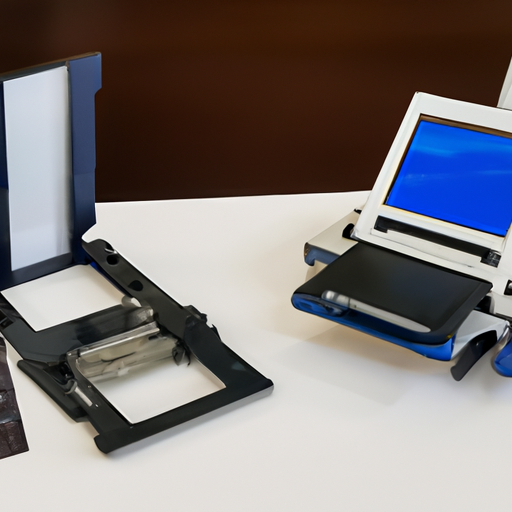
When it comes to optical testing equipment, proper training is essential to ensure accurate and reliable results. Whether you are a new user or an experienced technician, understanding how to use the equipment correctly is crucial for obtaining precise measurements and maintaining the equipment's longevity. In this article, we will discuss some key considerations for product training when it comes to optical testing equipment.1. Understanding the basics: Before using any optical testing equipment, it is important to have a solid understanding of the basic principles behind the technology. This includes knowing how light interacts with different materials, how to interpret data from the equipment, and how to troubleshoot common issues that may arise during testing. A comprehensive training program should cover these fundamental concepts to ensure that users have a strong foundation to build upon.2. Hands-on practice: One of the most effective ways to learn how to use optical testing equipment is through hands-on practice. Training programs should include opportunities for users to work with the equipment in a controlled environment, allowing them to familiarize themselves with the various features and functions. This hands-on experience will help users feel more comfortable using the equipment and will give them the confidence to perform tests accurately.3. Safety precautions: Optical testing equipment can involve the use of lasers, high voltages, and other potentially hazardous elements. It is crucial that users are trained on proper safety precautions to prevent accidents and injuries. Training programs should include information on how to safely operate the equipment, how to handle hazardous materials, and what to do in case of an emergency. Users should also be trained on how to properly maintain the equipment to prevent malfunctions that could pose a safety risk.4. Software training: Many optical testing equipment come with software programs that are used to control the equipment, analyze data, and generate reports. Training programs should include instruction on how to use the software effectively, including how to set up tests, calibrate the equipment, and interpret the results. Users should also be trained on how to troubleshoot software issues and how to update the software as needed.5. Ongoing support: Product training should not end once the initial training program is completed. Users should have access to ongoing support and resources to help them troubleshoot issues, answer questions, and stay up-to-date on the latest developments in optical testing technology. This could include online resources, user forums, and technical support hotlines. Regular refresher courses or advanced training programs can also help users continue to improve their skills and stay current with best practices.In conclusion, product training is a critical component of using optical testing equipment effectively. By providing users with a solid understanding of the technology, hands-on practice, safety precautions, software training, and ongoing support, companies can ensure that their employees are well-equipped to perform accurate and reliable tests. Investing in comprehensive product training will not only benefit the users but also the company as a whole by improving efficiency, reducing errors, and ultimately leading to better outcomes for customers.
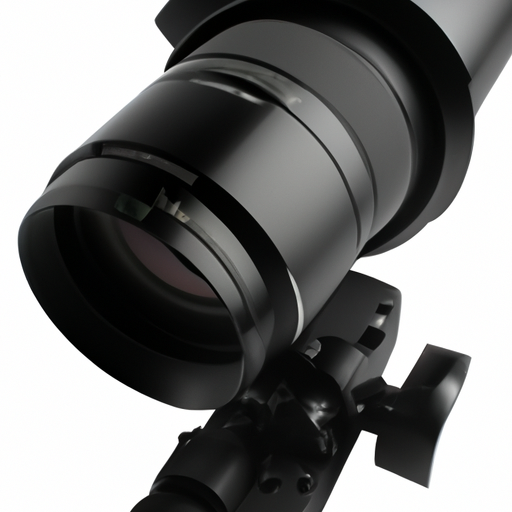
Optical instruments are devices that use lenses and mirrors to manipulate light in order to enhance our ability to see and analyze objects. These instruments have been used for centuries in various fields such as astronomy, microscopy, photography, and more. In this article, we will explore the key product features of optical instruments and how they are used in different applications.1. Magnification: One of the most important features of optical instruments is their ability to magnify objects. By using lenses or mirrors, these instruments can make objects appear larger than they actually are, allowing us to see details that are not visible to the naked eye. Magnification is crucial in fields such as microscopy, where scientists need to study tiny organisms or structures.2. Resolution: Resolution refers to the ability of an optical instrument to distinguish between two closely spaced objects. Instruments with higher resolution can provide clearer and more detailed images, making it easier to analyze and study objects. In fields such as astronomy, where researchers need to observe distant stars and galaxies, high resolution is essential for capturing accurate data.3. Field of view: The field of view of an optical instrument is the area that can be seen through the lens or eyepiece. A wider field of view allows users to see more of the object or scene they are observing, making it easier to navigate and study. In applications such as photography or surveillance, a larger field of view is important for capturing more information in a single frame.4. Light gathering ability: Optical instruments rely on light to create images, so their ability to gather and focus light is crucial for producing clear and bright images. Instruments with larger apertures or lenses can gather more light, resulting in brighter images with better contrast. This feature is particularly important in low-light conditions or when observing faint objects in astronomy.5. Image quality: The overall image quality of an optical instrument is determined by factors such as sharpness, contrast, and color accuracy. High-quality lenses and coatings can improve image sharpness and reduce aberrations, resulting in clearer and more accurate images. In fields such as photography or medical imaging, image quality is essential for making accurate diagnoses or capturing stunning visuals.6. Versatility: Optical instruments come in a wide range of types and designs, each suited for specific applications. Some instruments, such as microscopes or telescopes, are designed for magnifying small objects or distant celestial bodies. Others, like cameras or binoculars, are more versatile and can be used for a variety of purposes. The versatility of optical instruments allows them to be used in diverse fields and applications.7. Durability and reliability: Optical instruments are precision devices that require careful handling and maintenance to ensure their longevity and performance. High-quality materials and construction are essential for ensuring the durability and reliability of these instruments. Whether used in the field or in a laboratory, optical instruments must be able to withstand harsh conditions and frequent use without compromising their performance.In conclusion, optical instruments are essential tools that have revolutionized our ability to see and analyze the world around us. By understanding the key product features of these instruments, we can appreciate their importance in various fields and applications. Whether used for scientific research, photography, or surveillance, optical instruments play a crucial role in enhancing our vision and understanding of the world.
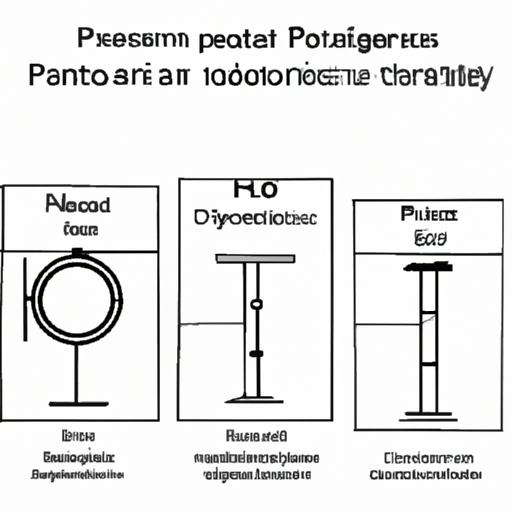
Optical instruments play a crucial role in various industries, from healthcare to telecommunications, and from aerospace to defense. These instruments rely on the manipulation of light to perform a wide range of functions, such as imaging, measuring, and analyzing. As a result, patents related to optical instruments are highly sought after and valuable in many industries.One industry that heavily relies on optical instruments is the healthcare sector. Medical imaging devices, such as MRI machines, CT scanners, and endoscopes, all use optical instruments to visualize internal structures and diagnose medical conditions. These devices are often protected by patents that cover their unique designs, technologies, and functionalities. For example, patents related to the use of fiber optics in endoscopes have revolutionized minimally invasive surgeries and improved patient outcomes.Another industry that benefits from optical instrument patents is telecommunications. Fiber optic cables, which transmit data using light signals, are essential for high-speed internet connections and telecommunications networks. Patents related to fiber optic technology, such as signal amplification, data encryption, and network optimization, are crucial for the development of advanced communication systems. Companies that hold these patents have a competitive advantage in the telecommunications market and can license their technology to other companies for a profit.The aerospace industry also relies on optical instruments for a variety of applications, such as navigation, surveillance, and remote sensing. Satellites, drones, and aircraft use optical instruments, such as cameras, sensors, and lasers, to gather data and monitor the environment. Patents related to optical instruments in aerospace cover a wide range of technologies, including image stabilization, target tracking, and infrared imaging. These patents are essential for ensuring the safety and efficiency of aerospace operations and are often held by government agencies and defense contractors.Speaking of defense, the defense industry is another major player in the optical instrument patent landscape. Military applications of optical instruments include surveillance systems, targeting devices, and night vision goggles. Patents related to optical instruments in defense often involve advanced technologies, such as adaptive optics, laser weapons, and stealth coatings. These patents are highly classified and closely guarded by governments and defense contractors to maintain national security and technological superiority.In addition to these industries, there are many other sectors that rely on optical instruments and hold important patents related to them. For example, the automotive industry uses optical instruments for driver assistance systems, autonomous vehicles, and head-up displays. The entertainment industry uses optical instruments for virtual reality, augmented reality, and 3D imaging. The manufacturing industry uses optical instruments for quality control, precision measurement, and laser cutting.Overall, patents related to optical instruments are crucial for driving innovation and competitiveness in a wide range of industries. Companies that hold these patents have the opportunity to commercialize their technology, protect their intellectual property, and gain a competitive advantage in the marketplace. As optical instruments continue to advance and evolve, the importance of patents in this field will only continue to grow.

The mainstream material production process is a complex and multi-step procedure that involves the transformation of raw materials into finished products. This process is essential for the manufacturing of a wide range of goods, from clothing and electronics to vehicles and construction materials. Understanding the material production process is crucial for ensuring the quality, efficiency, and sustainability of the products we use in our daily lives.The material production process typically begins with the extraction of raw materials from the earth. These raw materials can include minerals, metals, fossil fuels, and natural fibers, among others. The extraction process can vary depending on the type of material being mined or harvested, but it often involves drilling, blasting, or digging to access the desired resources. Once the raw materials have been extracted, they are transported to processing facilities where they undergo further refinement and transformation.One of the most common methods of processing raw materials is through smelting, which involves heating the materials to high temperatures to extract the desired elements or compounds. Smelting is commonly used in the production of metals such as iron, copper, and aluminum, which are essential for a wide range of industrial applications. During the smelting process, impurities are removed from the raw materials, resulting in a purer and more refined product that can be used in manufacturing.In addition to smelting, other processing techniques such as casting, forging, and extrusion are used to shape and form raw materials into finished products. Casting involves pouring molten metal into a mold to create a specific shape, while forging involves shaping metal through the application of pressure and heat. Extrusion is a process in which a material is forced through a die to create a long, uniform shape, such as a tube or rod.Once the raw materials have been processed and shaped, they are often subjected to additional treatments to enhance their properties. For example, metals may undergo heat treatment to improve their strength and durability, while textiles may be dyed or treated with chemicals to enhance their color or performance. These treatments are essential for ensuring that the finished products meet the desired specifications and quality standards.The final step in the material production process is often assembly, where the processed materials are combined and assembled into finished products. This can involve the use of various techniques such as welding, soldering, and adhesive bonding to join different components together. Assembly is a critical step in the manufacturing process, as it determines the final form and function of the product.In recent years, there has been a growing emphasis on sustainability and environmental responsibility in the material production process. Manufacturers are increasingly looking for ways to reduce waste, energy consumption, and emissions in their operations. This has led to the development of new technologies and processes that are more efficient and environmentally friendly.One example of a sustainable material production process is recycling, which involves reusing materials from discarded products to create new ones. Recycling helps to conserve natural resources, reduce waste, and lower the environmental impact of manufacturing. Many industries, such as the automotive and electronics sectors, have implemented recycling programs to recover valuable materials from end-of-life products.Another important aspect of sustainable material production is the use of renewable resources and alternative materials. For example, bio-based materials such as bamboo, hemp, and corn-based plastics are being increasingly used as alternatives to traditional materials like wood and petroleum-based plastics. These renewable resources are often more environmentally friendly and can help reduce the carbon footprint of manufacturing processes.In conclusion, the mainstream material production process is a complex and multifaceted procedure that involves the extraction, processing, shaping, and assembly of raw materials into finished products. Understanding this process is essential for ensuring the quality, efficiency, and sustainability of the products we use in our daily lives. By adopting sustainable practices and technologies, manufacturers can reduce waste, conserve resources, and minimize their environmental impact. As consumers, we can also play a role in promoting sustainability by choosing products that are made with environmentally friendly materials and processes. By working together, we can create a more sustainable and responsible material production process for the benefit of future generations.
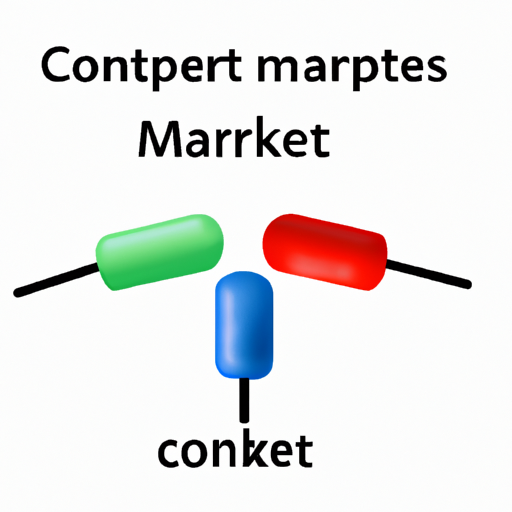
Inductor components are essential electronic devices that store energy in the form of a magnetic field. They are commonly used in a wide range of electronic devices and systems, including power supplies, filters, and amplifiers. As such, the market for inductor components is highly competitive, with numerous manufacturers vying for market share.In order to succeed in this competitive market, inductor component manufacturers must develop and implement effective market policies. These policies are designed to help companies achieve their business objectives, such as increasing sales, expanding market share, and improving profitability. In this article, we will discuss some of the key market policies that inductor component manufacturers may adopt to achieve success in the market.1. Product DifferentiationOne of the most important market policies for inductor component manufacturers is product differentiation. With so many competitors in the market, it is essential for companies to differentiate their products from those of their competitors. This can be achieved through various means, such as offering unique features, superior performance, or better quality. By differentiating their products, companies can attract customers who are looking for something different or better than what is currently available in the market.2. Pricing StrategyAnother important market policy for inductor component manufacturers is pricing strategy. Pricing plays a crucial role in determining a company's competitiveness in the market. Companies must carefully consider their pricing strategy to ensure that they are able to attract customers while also generating sufficient revenue to cover their costs and make a profit. This may involve setting competitive prices, offering discounts or promotions, or implementing dynamic pricing strategies based on market conditions.3. Distribution ChannelsEffective distribution channels are essential for inductor component manufacturers to reach their target customers and maximize sales. Companies must carefully consider their distribution strategy, including the selection of distribution channels, the management of relationships with distributors and retailers, and the development of effective marketing and promotional campaigns. By establishing strong distribution channels, companies can ensure that their products are readily available to customers and that they are able to reach a wider audience.4. Marketing and PromotionMarketing and promotion are key market policies for inductor component manufacturers to create awareness of their products and attract customers. Companies must develop effective marketing strategies, including advertising, public relations, and social media campaigns, to promote their products and build brand recognition. By investing in marketing and promotion, companies can increase their visibility in the market and attract new customers.5. Customer ServiceProviding excellent customer service is another important market policy for inductor component manufacturers. Companies must ensure that they are able to meet the needs and expectations of their customers, including providing timely support, addressing customer inquiries and concerns, and offering product warranties and guarantees. By providing exceptional customer service, companies can build customer loyalty and satisfaction, which can lead to repeat business and positive word-of-mouth referrals.6. Research and DevelopmentInvesting in research and development is essential for inductor component manufacturers to stay competitive in the market. Companies must continuously innovate and develop new products and technologies to meet the changing needs of customers and stay ahead of competitors. By investing in research and development, companies can improve their products, enhance their performance, and differentiate themselves in the market.In conclusion, inductor component manufacturers must develop and implement effective market policies to succeed in the competitive market. By focusing on product differentiation, pricing strategy, distribution channels, marketing and promotion, customer service, and research and development, companies can achieve their business objectives and gain a competitive edge in the market. By adopting these market policies, inductor component manufacturers can position themselves for success and achieve sustainable growth in the market.
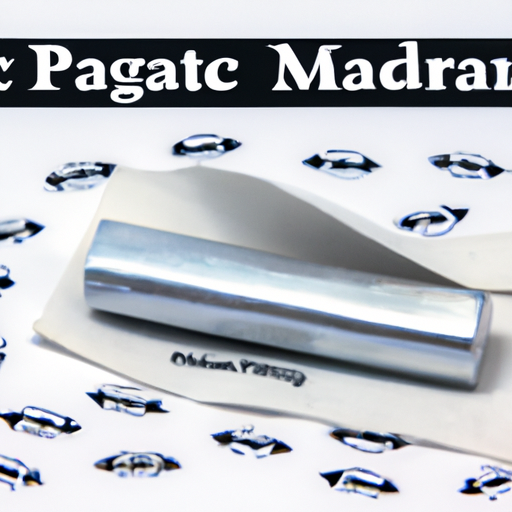
Magnetic elements are essential components in various industries, including electronics, automotive, and healthcare. These elements play a crucial role in the functioning of devices such as motors, sensors, and magnetic storage devices. To ensure the quality and performance of magnetic elements, there are specific product standards that manufacturers must adhere to. In this article, we will discuss the product standards for magnetic elements and why they are important.Product standards for magnetic elements are guidelines and specifications set by regulatory bodies or industry organizations to ensure the quality, safety, and performance of these components. These standards cover various aspects of magnetic elements, including material composition, physical dimensions, magnetic properties, and environmental considerations. By following these standards, manufacturers can produce reliable and consistent magnetic elements that meet the requirements of their intended applications.One of the most important product standards for magnetic elements is the material composition. The type of material used in a magnetic element can significantly impact its magnetic properties, such as strength, coercivity, and temperature stability. Common materials used in magnetic elements include neodymium, samarium cobalt, and ferrite. Each material has its unique magnetic properties and is suitable for different applications. For example, neodymium magnets are known for their high strength and are often used in motors and speakers, while ferrite magnets are more cost-effective and are commonly used in household appliances.In addition to material composition, product standards for magnetic elements also specify physical dimensions such as shape, size, and tolerance. These dimensions are critical for ensuring proper fit and function in the final application. For example, a magnetic element used in a sensor must have precise dimensions to ensure accurate detection and measurement. Manufacturers must adhere to these dimensional standards to avoid compatibility issues and ensure the proper functioning of the magnetic element.Magnetic properties are another essential aspect covered by product standards for magnetic elements. These properties include magnetic flux density, coercivity, remanence, and temperature stability. These properties determine the performance of the magnetic element in terms of strength, stability, and reliability. For example, a magnetic element used in a medical device must have stable magnetic properties to ensure consistent performance over time. Manufacturers must test and verify these properties according to the specified standards to guarantee the quality and reliability of the magnetic element.Environmental considerations are also addressed in product standards for magnetic elements. These considerations include factors such as temperature, humidity, and corrosion resistance. Magnetic elements used in outdoor or harsh environments must be able to withstand these conditions without degradation in performance. Manufacturers must conduct environmental testing to ensure that their magnetic elements meet the required standards for durability and reliability.Compliance with product standards for magnetic elements is essential for manufacturers to demonstrate the quality and reliability of their products. Meeting these standards can also help manufacturers gain the trust and confidence of customers and regulatory authorities. Additionally, adherence to product standards can help manufacturers avoid costly recalls, rejections, or legal issues related to non-compliant products.In conclusion, product standards for magnetic elements are essential for ensuring the quality, safety, and performance of these components. By following these standards, manufacturers can produce reliable and consistent magnetic elements that meet the requirements of their intended applications. Compliance with product standards can help manufacturers gain the trust of customers and regulatory authorities, as well as avoid costly issues related to non-compliant products. Overall, product standards play a crucial role in the manufacturing and use of magnetic elements in various industries.

Embedded computers are becoming increasingly popular in a wide range of industries, from automotive to healthcare to industrial automation. These compact and powerful devices are designed to perform specific tasks within a larger system, making them ideal for applications where traditional computers are too bulky or power-hungry.One of the latest embedded computer specifications to hit the market is the Intel Core i7-1185G7 processor. This powerful chip features four cores and eight threads, with a base clock speed of 3.0 GHz and a turbo boost speed of up to 4.8 GHz. With support for up to 64 GB of DDR4 RAM and integrated Intel Iris Xe graphics, the Core i7-1185G7 is capable of handling even the most demanding applications with ease.In terms of connectivity, the Core i7-1185G7 offers support for Thunderbolt 4, USB 3.2 Gen 2, and PCIe 4.0, making it easy to connect to a wide range of peripherals and devices. It also features integrated Wi-Fi 6 and Bluetooth 5.1 for fast and reliable wireless connectivity.One of the key features of the Core i7-1185G7 is its low power consumption, making it ideal for embedded applications where energy efficiency is a priority. With a TDP of just 15 watts, this processor can deliver high performance without draining the battery or generating excessive heat.In addition to the Core i7-1185G7, there are a number of other embedded computer specifications that are worth considering for your next project. For example, the AMD Ryzen Embedded V2000 series offers a range of processors with up to eight cores and 16 threads, making them ideal for applications that require high levels of parallel processing.Another popular option is the NVIDIA Jetson AGX Xavier, which features a powerful GPU with 512 CUDA cores and support for up to 32 GB of LPDDR4x RAM. This makes it ideal for applications that require high levels of graphics processing, such as autonomous vehicles or robotics.When choosing an embedded computer specification for your project, it's important to consider factors such as performance, power consumption, and connectivity options. By selecting the right processor and peripherals, you can ensure that your embedded system will be able to meet the demands of your application while remaining energy-efficient and reliable.In conclusion, the latest embedded computer specifications offer a wide range of options for developers looking to create powerful and efficient embedded systems. Whether you're working on a project in the automotive, healthcare, or industrial automation industry, there is sure to be a processor that meets your needs. By carefully considering your requirements and selecting the right components, you can create a high-performance embedded system that will deliver reliable performance for years to come.
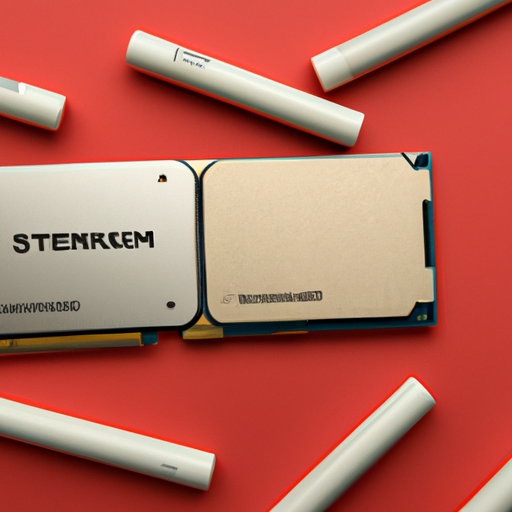
Embedded computers are specialized computing devices that are designed to perform specific tasks within a larger system. These devices are typically small, low-power, and have limited processing capabilities compared to traditional desktop or laptop computers. There are many different models of embedded computers available on the market, each with its own unique features and specifications. In this article, we will explore the differences between mainstream embedded computer models, including their form factors, processing power, connectivity options, and other key features.Form FactorOne of the key differences between mainstream embedded computer models is their form factor. Embedded computers come in a variety of shapes and sizes, ranging from small single-board computers (SBCs) to larger industrial-grade systems. SBCs are compact devices that typically feature a single circuit board with all of the necessary components, including the processor, memory, and I/O ports, integrated onto a single PCB. These devices are often used in applications where space is limited, such as in industrial automation, robotics, and IoT devices.Industrial-grade embedded computers, on the other hand, are larger and more robust devices that are designed to withstand harsh environmental conditions, such as extreme temperatures, humidity, and vibration. These devices are often used in industrial control systems, transportation systems, and other mission-critical applications where reliability is paramount. Industrial-grade embedded computers typically feature a ruggedized chassis, multiple expansion slots, and support for a wide range of I/O interfaces.Processing PowerAnother key difference between mainstream embedded computer models is their processing power. Embedded computers come in a variety of configurations, ranging from low-power ARM-based processors to high-performance x86 processors. The choice of processor depends on the specific requirements of the application, such as the level of processing power needed, power consumption, and cost considerations.Low-power ARM-based processors are commonly used in embedded systems that require minimal processing power, such as IoT devices, smart appliances, and consumer electronics. These processors are energy-efficient and cost-effective, making them ideal for battery-powered devices or applications where power consumption is a concern.High-performance x86 processors, on the other hand, are used in embedded systems that require more processing power, such as industrial automation, digital signage, and medical imaging. These processors offer higher clock speeds, more cores, and support for advanced features such as virtualization and encryption, making them suitable for demanding applications that require high computational performance.Connectivity OptionsEmbedded computers also differ in terms of their connectivity options. Most embedded computers come with a variety of I/O interfaces, such as USB, Ethernet, serial ports, and GPIO pins, that allow them to communicate with other devices and peripherals. The choice of connectivity options depends on the specific requirements of the application, such as the need for high-speed data transfer, network connectivity, or support for legacy devices.Ethernet is a common connectivity option in embedded computers, providing high-speed networking capabilities for applications that require data transfer over a local area network (LAN) or the internet. Many embedded computers also come with built-in Wi-Fi and Bluetooth connectivity, allowing them to connect to wireless networks and peripherals without the need for additional hardware.In addition to wired and wireless connectivity options, some embedded computers also support cellular connectivity, allowing them to communicate over cellular networks such as 4G LTE or 5G. This is particularly useful for applications that require remote monitoring and control, such as fleet management, asset tracking, and remote sensing.Other Key FeaturesIn addition to form factor, processing power, and connectivity options, mainstream embedded computer models also differ in terms of other key features, such as storage capacity, operating system support, and ruggedization. Storage capacity refers to the amount of onboard storage available on the embedded computer, which can range from a few gigabytes to several terabytes, depending on the specific requirements of the application.Operating system support is another important consideration when choosing an embedded computer. Most embedded computers support popular operating systems such as Linux, Windows Embedded, and Android, as well as real-time operating systems (RTOS) such as FreeRTOS and VxWorks. The choice of operating system depends on the specific requirements of the application, such as real-time performance, security, and compatibility with existing software.Ruggedization is another key feature of mainstream embedded computer models, particularly industrial-grade systems. Ruggedized embedded computers are designed to withstand harsh environmental conditions, such as extreme temperatures, humidity, and vibration, making them suitable for use in industrial and outdoor applications. These devices typically feature a ruggedized chassis, sealed connectors, and support for wide operating temperature ranges, ensuring reliable operation in challenging environments.ConclusionIn conclusion, mainstream embedded computer models differ in terms of form factor, processing power, connectivity options, and other key features. The choice of embedded computer depends on the specific requirements of the application, such as the level of processing power needed, connectivity options, storage capacity, operating system support, and ruggedization. By understanding the differences between mainstream embedded computer models, developers and system integrators can choose the right device for their specific application, ensuring optimal performance and reliability.
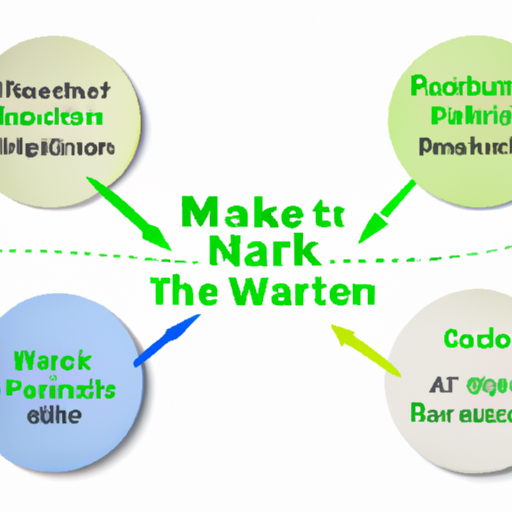
The market outlook for network solutions is extremely positive, with the global network solutions market expected to grow at a rapid pace in the coming years. As businesses continue to digitize their operations and rely more heavily on technology, the demand for robust and reliable network solutions is only expected to increase.One of the key drivers of this growth is the increasing adoption of cloud computing and the Internet of Things (IoT) by businesses of all sizes. These technologies require strong network infrastructure to support the massive amounts of data being generated and transmitted, creating a need for advanced network solutions that can handle the increased workload.Additionally, the rise of remote work and the need for secure and reliable connectivity for employees working from home has further fueled the demand for network solutions. With more companies embracing flexible work arrangements, the importance of having a strong network that can support remote access and collaboration has never been greater.Another factor driving the growth of the network solutions market is the increasing complexity of networks themselves. As networks become more sophisticated and interconnected, businesses are looking for comprehensive solutions that can manage and optimize their entire network infrastructure. This includes not only traditional networking components like routers and switches, but also security solutions, software-defined networking (SDN) technologies, and network monitoring and management tools.In response to these trends, network solution providers are constantly innovating and developing new products and services to meet the evolving needs of their customers. This includes advancements in areas such as network virtualization, software-defined networking, and network automation, which are all aimed at making networks more agile, scalable, and secure.One of the key trends shaping the network solutions market is the shift towards software-defined networking (SDN) and network function virtualization (NFV). These technologies allow businesses to virtualize their network infrastructure, making it more flexible and easier to manage. By decoupling network functions from physical hardware, SDN and NFV enable businesses to quickly adapt to changing network requirements and scale their infrastructure as needed.Another important trend in the network solutions market is the increasing focus on network security. With cyber threats becoming more sophisticated and prevalent, businesses are investing heavily in security solutions to protect their networks and data. This includes technologies such as next-generation firewalls, intrusion detection and prevention systems, and secure access solutions, all of which are essential for safeguarding networks against cyber attacks.Overall, the outlook for the network solutions market is bright, with strong growth expected in the coming years. As businesses continue to embrace digital transformation and rely more heavily on technology, the need for advanced network solutions will only increase. By investing in innovative technologies and staying ahead of the curve, network solution providers can capitalize on this growing demand and help businesses build the robust and reliable networks they need to succeed in today's digital world.

When it comes to implementing network solutions within an organization, proper training is essential to ensure that the technology is effectively utilized and maintained. Network solution product training is crucial for IT professionals, network administrators, and end-users to understand the features and functionalities of the network solution, as well as how to troubleshoot common issues that may arise.In this article, we will discuss the key considerations for network solution product training, including the importance of training, the target audience, training methods, and ongoing support.Importance of TrainingTraining is essential for the successful implementation of network solutions within an organization. Without proper training, users may struggle to understand how to use the technology effectively, leading to inefficiencies and potential security risks. Training helps to ensure that users are knowledgeable about the features and functionalities of the network solution, as well as best practices for maintaining and troubleshooting the technology.Additionally, training can help to increase user adoption and satisfaction with the network solution. When users are confident in their ability to use the technology, they are more likely to embrace it and incorporate it into their daily workflows. This can lead to increased productivity and efficiency within the organization.Target AudienceWhen planning network solution product training, it is important to consider the target audience. The training needs of IT professionals and network administrators may differ from those of end-users, so it is important to tailor the training program to meet the specific needs of each group.For IT professionals and network administrators, training should focus on the technical aspects of the network solution, including installation, configuration, and maintenance. These users may require more in-depth training to ensure that they have the knowledge and skills necessary to effectively manage the network solution.For end-users, training should focus on how to use the network solution in their daily workflows. This may include training on how to access the network, connect to resources, and troubleshoot common issues. End-user training should be user-friendly and easy to understand, as these users may not have a technical background.Training MethodsThere are several training methods that can be used to deliver network solution product training, including instructor-led training, online training, and self-paced training. The best training method will depend on the needs of the organization and the target audience.Instructor-led training is a popular option for network solution product training, as it allows for real-time interaction with an instructor and hands-on practice with the technology. This type of training can be delivered in-person or virtually, depending on the needs of the organization.Online training is another effective method for delivering network solution product training. Online training can be accessed from anywhere, at any time, making it a convenient option for users who may be located in different locations. Online training can include video tutorials, interactive modules, and quizzes to test knowledge and understanding.Self-paced training is a flexible option for users who prefer to learn at their own pace. Self-paced training can be accessed online and allows users to progress through the training materials at their own speed. This type of training is ideal for users who may have busy schedules or limited availability for traditional training sessions.Ongoing SupportIn addition to initial training, ongoing support is essential to ensure that users are able to effectively use the network solution. Ongoing support can include access to a help desk or support team, online resources and documentation, and regular training updates and refresher courses.A help desk or support team can provide users with assistance when they encounter issues or have questions about the network solution. This can help to minimize downtime and ensure that users are able to quickly resolve any issues that may arise.Online resources and documentation can provide users with additional information and guidance on how to use the network solution. This can include user guides, FAQs, and troubleshooting tips to help users troubleshoot common issues on their own.Regular training updates and refresher courses can help to keep users up-to-date on the latest features and functionalities of the network solution. This can help to ensure that users are able to take full advantage of the technology and maximize their productivity.In conclusion, network solution product training is essential for the successful implementation and utilization of network solutions within an organization. By considering the importance of training, the target audience, training methods, and ongoing support, organizations can ensure that users are knowledgeable and confident in their ability to use the technology effectively. Proper training can lead to increased user adoption, productivity, and satisfaction with the network solution.

Adhesive is a versatile and essential product that is used in a wide range of industries and applications. From household repairs to industrial manufacturing, adhesive plays a crucial role in bonding materials together. In this article, we will explore the various product features of adhesive and how they contribute to its effectiveness and usability.One of the key features of adhesive is its ability to bond different materials together. Whether it is paper, wood, metal, plastic, or fabric, adhesive can create a strong and durable bond that holds the materials together. This makes adhesive a versatile product that can be used in a wide range of applications, from simple household repairs to complex industrial processes.Another important feature of adhesive is its ease of use. Most adhesives come in a convenient form, such as a tube, bottle, or spray, that makes it easy to apply to the materials that need to be bonded. Adhesive also dries quickly, allowing for fast and efficient bonding of materials. This makes adhesive a convenient and practical solution for a variety of bonding needs.Adhesive also offers a strong and reliable bond that can withstand various environmental conditions. Whether it is heat, cold, moisture, or chemicals, adhesive is designed to maintain its bond strength even in challenging conditions. This makes adhesive a reliable choice for applications where materials need to be bonded securely and consistently.In addition to its bonding capabilities, adhesive also offers flexibility in terms of its formulation and properties. There are many different types of adhesives available, each with its own unique characteristics and properties. For example, some adhesives are designed to be flexible and elastic, making them ideal for applications where materials need to move or bend. Other adhesives are designed to be rigid and strong, making them suitable for applications where materials need to be held in place securely.Furthermore, adhesive can be formulated to meet specific requirements, such as temperature resistance, chemical resistance, or UV resistance. This allows for customization of adhesive products to suit the specific needs of different applications. Whether it is bonding materials in extreme temperatures, harsh chemical environments, or outdoor settings, there is an adhesive formulation available to meet the requirements.Another important feature of adhesive is its ability to provide a clean and seamless bond. Unlike mechanical fasteners such as screws or nails, adhesive creates a bond that is invisible and does not disrupt the appearance of the materials being bonded. This makes adhesive an ideal choice for applications where aesthetics are important, such as in woodworking, furniture making, or product assembly.Adhesive also offers a cost-effective solution for bonding materials. Compared to other bonding methods such as welding or soldering, adhesive is often more affordable and requires less equipment and labor to apply. This makes adhesive a practical choice for a wide range of applications, from DIY projects to large-scale manufacturing processes.In conclusion, adhesive is a versatile and essential product that offers a wide range of features and benefits. From its ability to bond different materials together to its ease of use, reliability, flexibility, and cost-effectiveness, adhesive is a practical solution for a variety of bonding needs. Whether it is for household repairs, industrial manufacturing, or creative projects, adhesive is a reliable and effective product that plays a crucial role in bonding materials together.

Adhesive tape is a versatile and essential tool in many industries and households. It is used for a wide range of applications, from packaging and sealing to crafting and DIY projects. There are several mainstream models of adhesive tape available on the market, each with its own unique features and benefits. In this article, we will explore some of the most popular types of adhesive tape and their uses.1. Duct TapeDuct tape is perhaps one of the most well-known and versatile types of adhesive tape. It is a strong and durable tape that is commonly used for a variety of applications, including repairing, sealing, and binding. Duct tape is made of a cloth or scrim backing coated with a strong adhesive, making it ideal for heavy-duty tasks. It is also waterproof and weather-resistant, making it suitable for outdoor use.Duct tape comes in a variety of colors and widths, making it easy to find the right tape for your specific needs. It is commonly used in construction, automotive repair, and emergency repairs. Duct tape is also popular for crafting and DIY projects, as it can be easily torn by hand and adheres well to a variety of surfaces.2. Masking TapeMasking tape is a type of adhesive tape that is commonly used in painting and decorating. It is made of a thin paper backing coated with a pressure-sensitive adhesive that is easy to remove without leaving residue behind. Masking tape is available in a variety of widths and colors, making it suitable for a wide range of applications.Masking tape is commonly used to mask off areas when painting, as it provides a clean and crisp edge. It can also be used for labeling, bundling, and temporary repairs. Masking tape is easy to tear by hand and can be easily removed without damaging the surface underneath.3. Electrical TapeElectrical tape is a type of adhesive tape that is specifically designed for electrical applications. It is made of a vinyl backing coated with a pressure-sensitive adhesive that is resistant to heat, moisture, and chemicals. Electrical tape is commonly used to insulate and protect electrical wires and connections, as well as to mark and identify wires.Electrical tape is available in a variety of colors, with each color representing a different voltage rating. It is important to use the correct color of electrical tape for each application to ensure safety and compliance with electrical codes. Electrical tape is also commonly used for bundling and labeling wires, as well as for temporary repairs.4. Double-Sided TapeDouble-sided tape is a type of adhesive tape that has adhesive on both sides, allowing it to bond two surfaces together. It is commonly used for mounting, bonding, and joining applications where a strong and invisible bond is required. Double-sided tape is available in a variety of thicknesses and adhesive strengths, making it suitable for a wide range of applications.Double-sided tape is commonly used in crafting, scrapbooking, and cardmaking, as it provides a clean and seamless bond without the need for messy glue. It is also commonly used in packaging and display applications, as it can securely bond items without the need for visible fasteners. Double-sided tape is available in a variety of widths and lengths, making it easy to find the right tape for your specific needs.5. Packaging TapePackaging tape is a type of adhesive tape that is specifically designed for sealing and securing packages and boxes. It is made of a strong and durable backing coated with a pressure-sensitive adhesive that provides a secure bond. Packaging tape is commonly used in shipping, moving, and storage applications, as it provides a reliable and tamper-evident seal.Packaging tape is available in a variety of widths and lengths, as well as in different adhesive strengths. It is important to choose the right type of packaging tape for your specific application to ensure a secure and reliable seal. Packaging tape is also available in different colors and patterns, making it suitable for branding and promotional purposes.In conclusion, adhesive tape is a versatile and essential tool that is used in a wide range of applications. There are several mainstream models of adhesive tape available on the market, each with its own unique features and benefits. Whether you need a strong and durable tape for heavy-duty tasks or a clean and invisible bond for crafting and decorating, there is a type of adhesive tape that is right for you. By understanding the different types of adhesive tape available, you can choose the right tape for your specific needs and ensure a successful outcome for your project.

The highly anticipated release of the new Isolator is just around the corner, and fans of the popular series are eagerly awaiting its arrival. The Isolator, created by author Reki Kawahara, has captured the hearts of readers with its unique blend of science fiction, action, and suspense. With the release of the new installment on the horizon, excitement is building as fans prepare to dive back into the thrilling world of the Isolator.The Isolator follows the story of Minoru Utsugi, a high school student who gains the ability to isolate himself from the rest of the world. This power, known as the "Isolator," allows him to block out all external stimuli and focus solely on his own thoughts and actions. However, this power comes with a price, as Minoru soon finds himself embroiled in a dangerous game of cat and mouse with a mysterious organization known as the "Syndicate."The new Isolator promises to continue the gripping story of Minoru Utsugi and his struggles against the Syndicate. With new challenges, enemies, and allies to encounter, fans can expect a thrilling and action-packed adventure that will keep them on the edge of their seats. As the release date draws near, anticipation is mounting as readers eagerly await the next chapter in this captivating series.One of the most exciting aspects of the new Isolator is the opportunity to delve deeper into the world and characters that fans have come to love. With each new installment, author Reki Kawahara expands upon the lore and mythology of the Isolator universe, providing readers with a richer and more immersive experience. From the intricately crafted world-building to the complex and compelling characters, the Isolator offers a depth and complexity that keeps readers coming back for more.In addition to the captivating story and characters, the Isolator also boasts stunning artwork that brings the world to life in vivid detail. From the futuristic technology to the dynamic action sequences, the illustrations in the Isolator are a feast for the eyes, enhancing the overall reading experience and immersing readers in the world of the series. With each new volume, fans can look forward to more breathtaking artwork that brings the Isolator universe to life in stunning detail.As the release date for the new Isolator approaches, fans are eagerly counting down the days until they can get their hands on the latest installment. Whether they are long-time fans of the series or newcomers looking to dive into the world of the Isolator for the first time, readers can expect an exciting and thrilling adventure that will keep them hooked from beginning to end. With its compelling story, engaging characters, and stunning artwork, the Isolator is sure to captivate readers and leave them eagerly anticipating the next installment in the series.In conclusion, the new Isolator is set to be a must-read for fans of the series and newcomers alike. With its gripping story, compelling characters, and stunning artwork, the Isolator promises to deliver an unforgettable reading experience that will keep readers coming back for more. As the release date draws near, excitement is building as fans prepare to embark on a thrilling new adventure in the world of the Isolator. So mark your calendars and get ready to immerse yourself in the captivating world of the Isolator once again.

Computer market policies are a set of rules and regulations that govern the buying and selling of computers and related products. These policies are put in place to ensure fair competition, protect consumers, and promote innovation in the industry. In this article, we will discuss some of the key market policies that govern the computer industry.One of the most important market policies in the computer industry is antitrust laws. These laws are designed to prevent monopolies and promote competition in the market. Companies that dominate the market can stifle innovation and raise prices, harming consumers. Antitrust laws prohibit practices such as price-fixing, bid-rigging, and market allocation, which can harm competition. Companies that violate antitrust laws can face hefty fines and other penalties.Another important market policy in the computer industry is intellectual property rights. Intellectual property rights protect the creations of individuals and companies, such as patents, trademarks, and copyrights. These rights allow companies to protect their innovations and prevent others from copying or using them without permission. Intellectual property rights are essential for promoting innovation in the computer industry, as they provide companies with the incentive to invest in research and development.Consumer protection laws are also crucial market policies in the computer industry. These laws are designed to protect consumers from unfair or deceptive practices by companies. For example, consumer protection laws require companies to provide accurate information about their products, such as their features, specifications, and prices. Companies that engage in false advertising or other deceptive practices can face legal action and fines.Data protection and privacy laws are another important market policy in the computer industry. These laws regulate how companies collect, store, and use personal data from consumers. Data protection laws require companies to obtain consent from consumers before collecting their data and to take measures to protect it from unauthorized access or disclosure. Companies that violate data protection laws can face fines and other penalties.Environmental regulations are also a key market policy in the computer industry. These regulations are designed to reduce the environmental impact of computer products, such as energy consumption, electronic waste, and toxic materials. Companies that produce computers are required to comply with regulations such as the Restriction of Hazardous Substances (RoHS) directive and the Energy Star program. These regulations help to promote sustainable practices in the industry and protect the environment.In addition to these market policies, there are also industry standards and certifications that govern the computer industry. These standards ensure that products meet certain quality and performance requirements, such as compatibility with other devices and security standards. Companies that meet these standards can earn certifications, such as ISO 9001 or UL certification, which can help to build trust with consumers and partners.Overall, market policies play a crucial role in shaping the computer industry. These policies help to promote competition, protect consumers, and promote innovation in the industry. Companies that comply with market policies can build trust with consumers and partners, while those that violate them can face legal action and other penalties. By following market policies, companies can help to create a fair and competitive market that benefits both consumers and businesses.